This document provides an overview of typeclasses in Haskell. It explains that typeclasses define properties that types can have, like being comparable (Eq) or ordered (Ord). Functions can constrain their parameters to only allow types that are members of certain typeclasses. The document also demonstrates how to define your own data types and derive standard typeclass instances or implement them yourself. This allows user-defined types to work with functions that require those typeclasses.

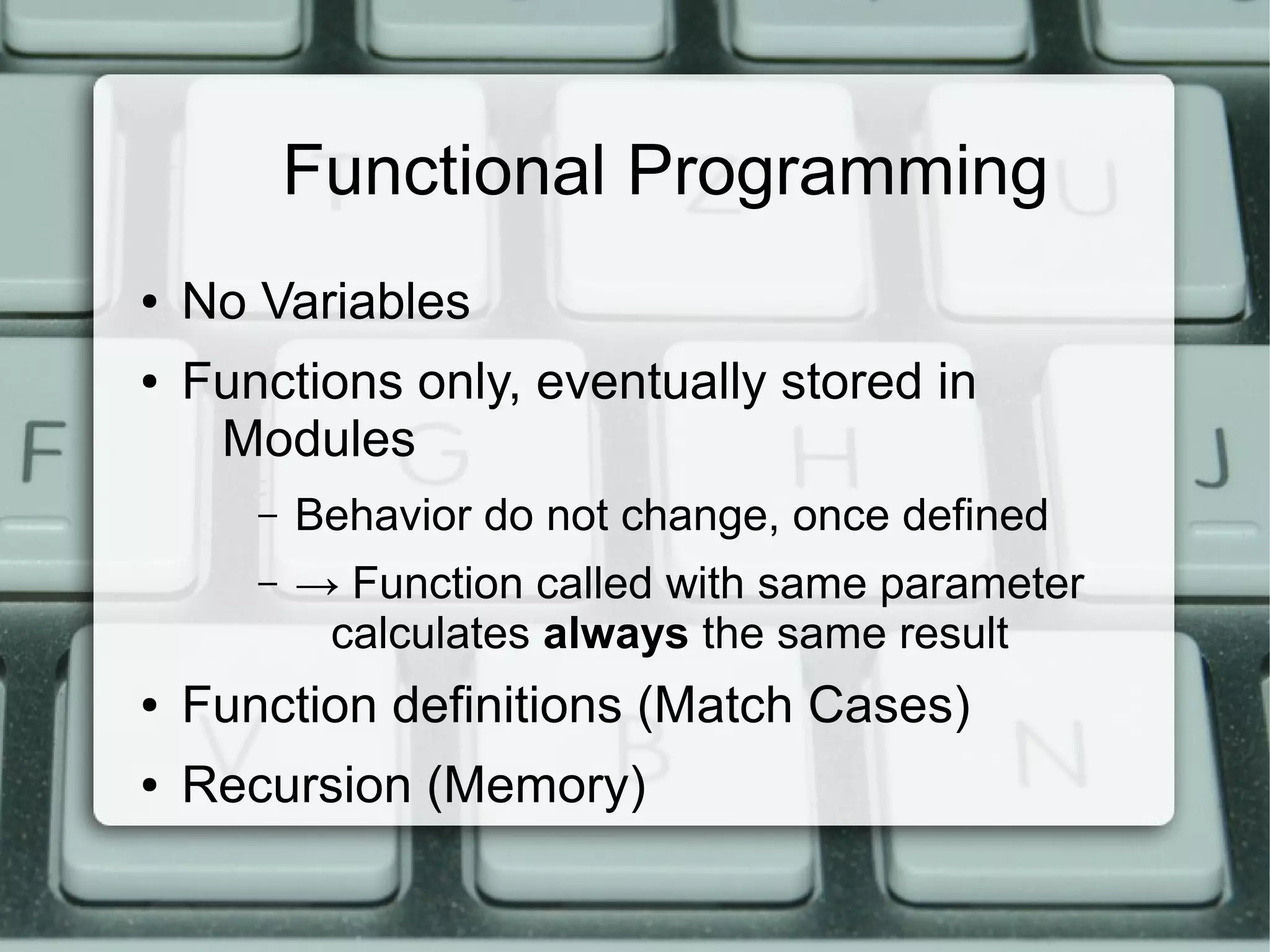
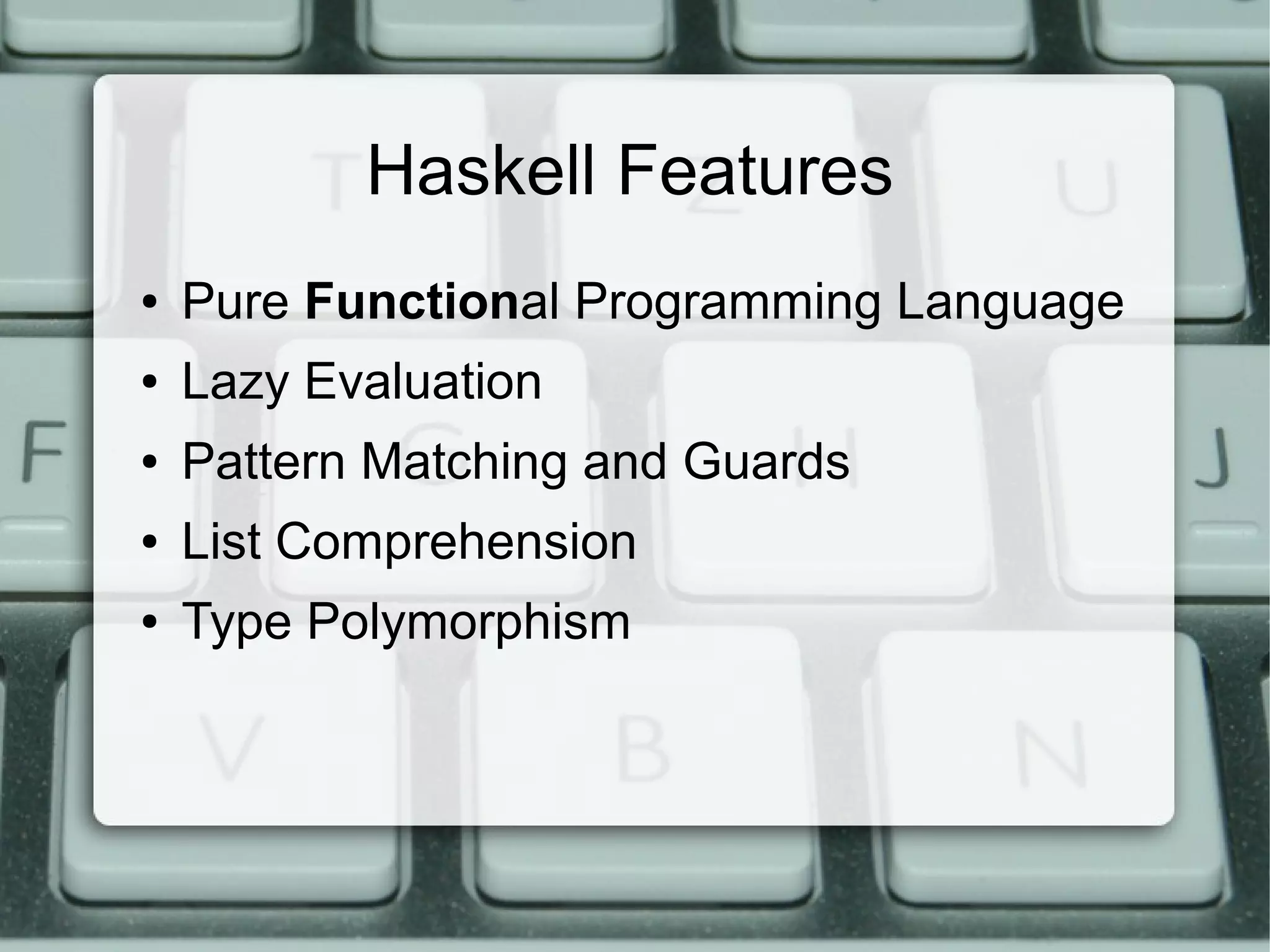
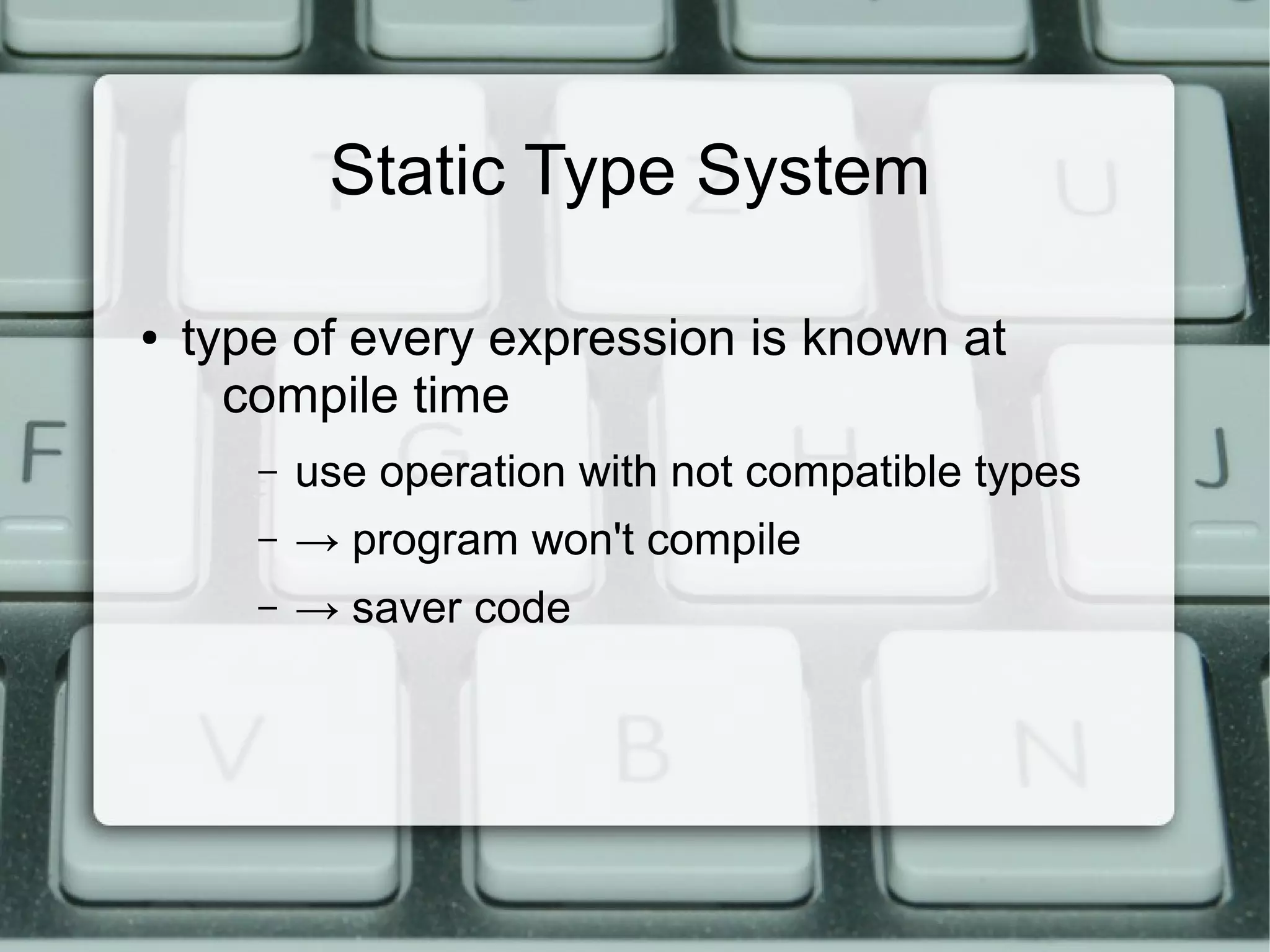
![Nice to remember (1)
● Types:
– starts with uppercase letter
– e.g.:
● Bool
● Int
● String
● [Int]
● (Bool, Char)
● Integer](https://image.slidesharecdn.com/06-haskelltype-builder-121213061055-phpapp01/75/06-haskell-type-builder-5-2048.jpg)
![Nice to remember (2)
● Typevariables
– to define generic types
– e.g.:
● maxList :: [a] -> a
● fst :: (a,b) -> a
● snd :: (a,b) -> b
– Typevariables a and b can contain every
type (including the same type)](https://image.slidesharecdn.com/06-haskelltype-builder-121213061055-phpapp01/75/06-haskell-type-builder-6-2048.jpg)
![Nice to remember (3)
● GHCi Commands (Interpreter):
– :t ← returns the function header (type)
– :t tail
tail :: [a] -> [a]
– :t 2 == 4
2 == 4 :: Bool
– :t "HELLO!"
"HELLO!" :: [Char]
– :i ← returns the function definition (interface)
– :i tail
tail :: [a] -> [a] --
Defined in GHC.List](https://image.slidesharecdn.com/06-haskelltype-builder-121213061055-phpapp01/75/06-haskell-type-builder-7-2048.jpg)
![Type Polymorphism (1)
● Statically typed, but Compiler can read type from
context (type inference)
● → no need to set type explicitly (but preferred!)
● → makes function more generic for different
kinds of types (type polymorphism)
– Why should I use quicksort :: [Int] -> [Int]
– even if I also want to sort character?
Hugs> quicksort ['f','a','d','b']
"abdf"](https://image.slidesharecdn.com/06-haskelltype-builder-121213061055-phpapp01/75/06-haskell-type-builder-8-2048.jpg)
![Type Polymorphism (2)
● the header could be
fact :: Int -> Int
maxList :: [Int] -> Int
● but is only limited to Int, but maxList could also
handle Char
● → why not make it generic?
maxList :: [a] -> a
● but what happens, if the corresponding Type is not
comparable or cannot be ordered?](https://image.slidesharecdn.com/06-haskelltype-builder-121213061055-phpapp01/75/06-haskell-type-builder-9-2048.jpg)
![Type Polymorphism (3)
● Solution: use Typeclasses
maxList :: (Ord a) => [a] -> a
● then we can be sure to use (<,<=, ==, /=, >=, >)
● function header can contain multiple typeclasses
maxList :: (Ord a, Eq b) => [a] -> [b] -> a
● In Haskell-Interpreter: to list the function header
:t <function_name>](https://image.slidesharecdn.com/06-haskelltype-builder-121213061055-phpapp01/75/06-haskell-type-builder-10-2048.jpg)
![Typeclasses (1)
● define properties of the types
● like an interface
● Typeclasses:
– Eq can be compared
– Ord can be ordered (>, <, >=, <=) (extending Eq)
– Show can be shown as string
– Read opposite of Show
– Enum sequentially ordered types (can be enumerated
and usable in List-Ranges ['a'..'e'])](https://image.slidesharecdn.com/06-haskelltype-builder-121213061055-phpapp01/75/06-haskell-type-builder-11-2048.jpg)
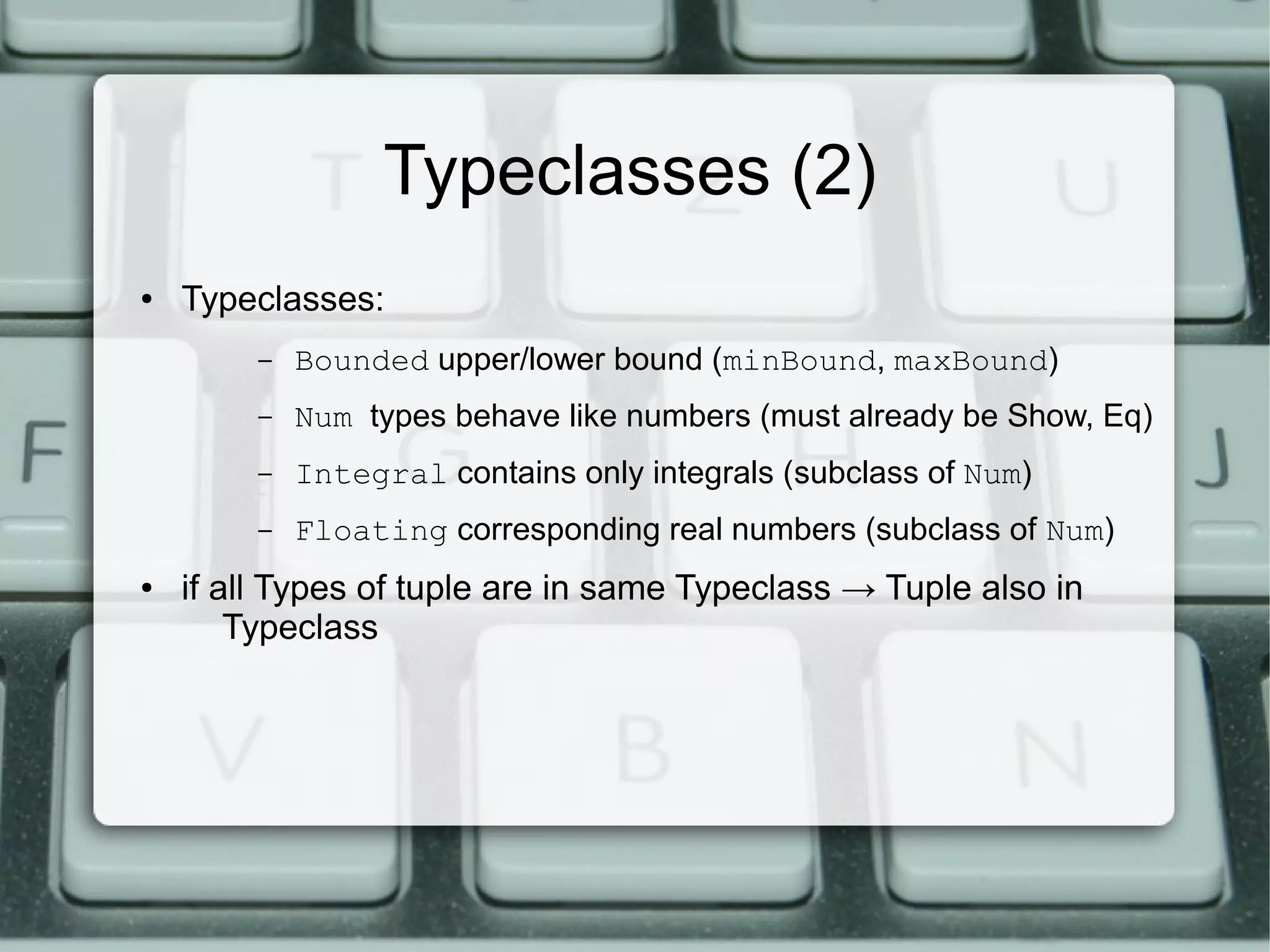
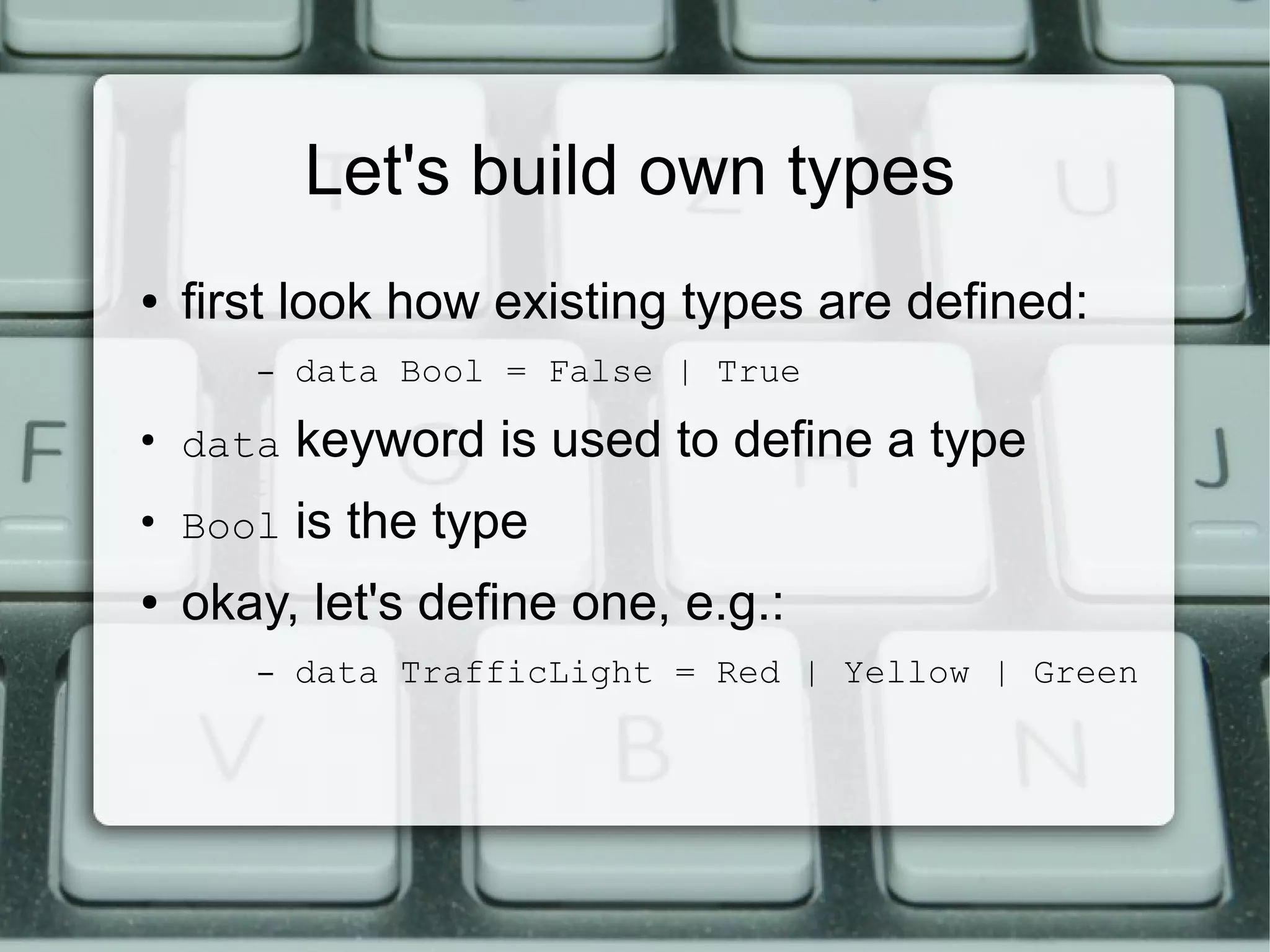
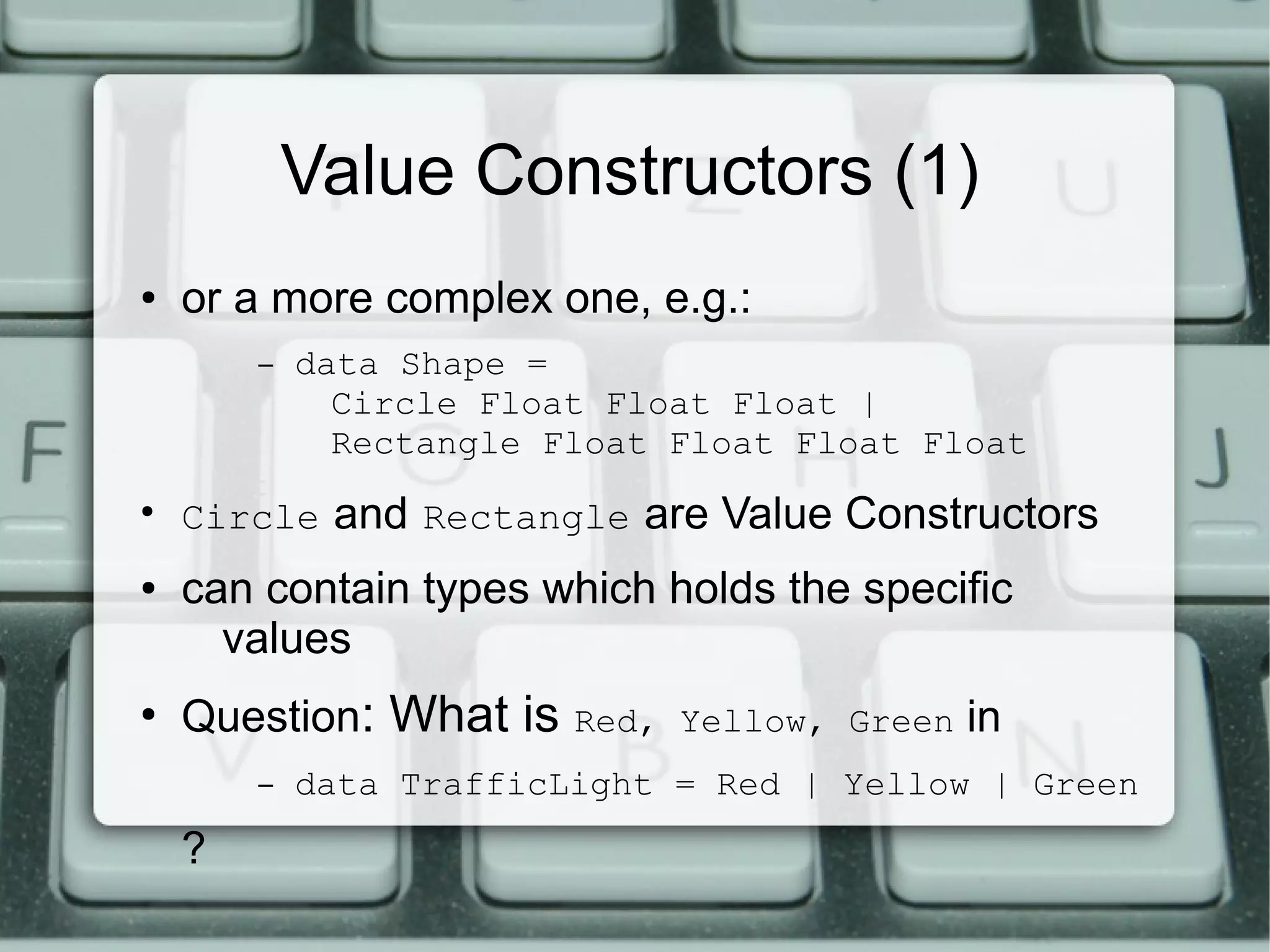
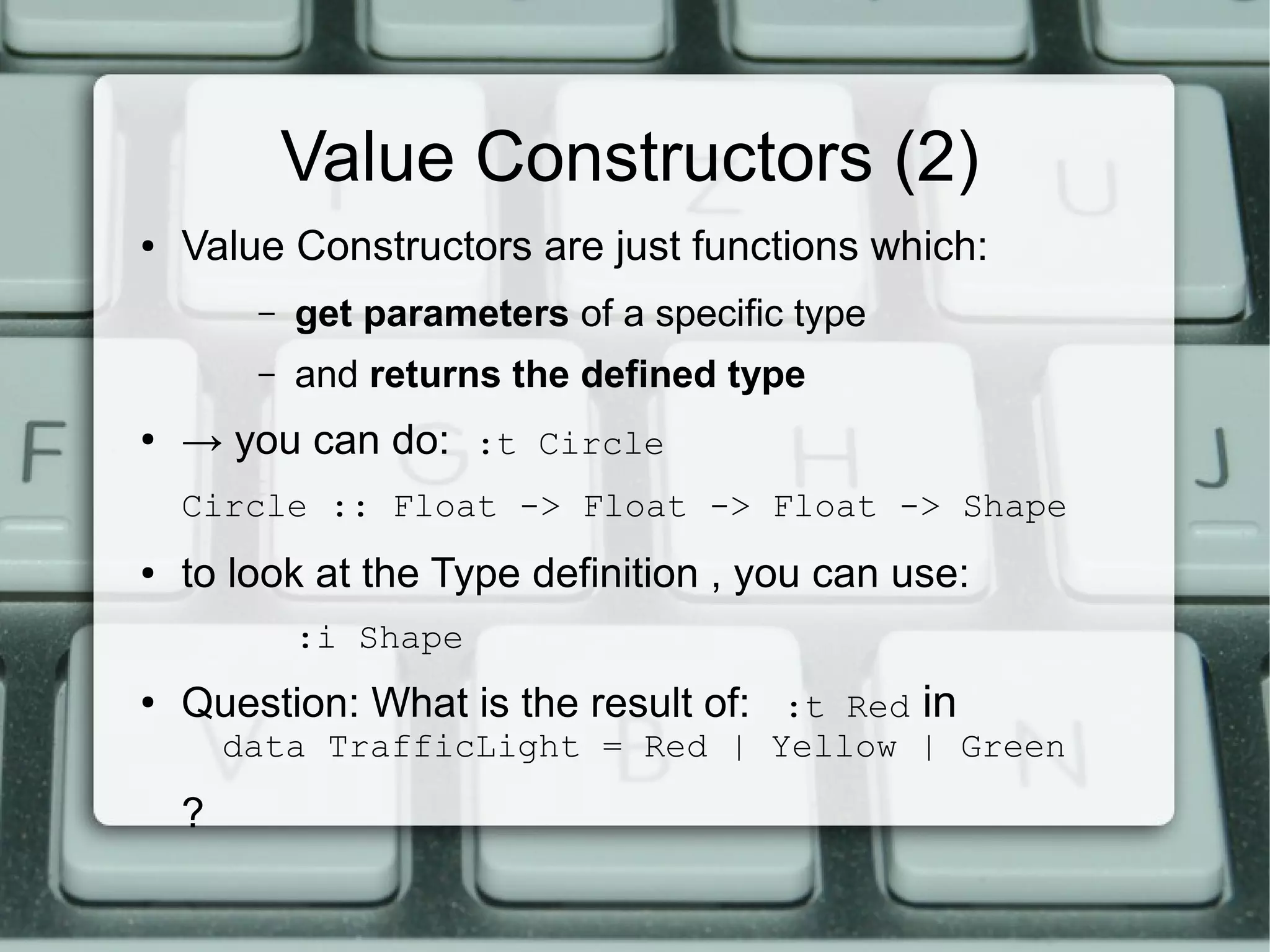
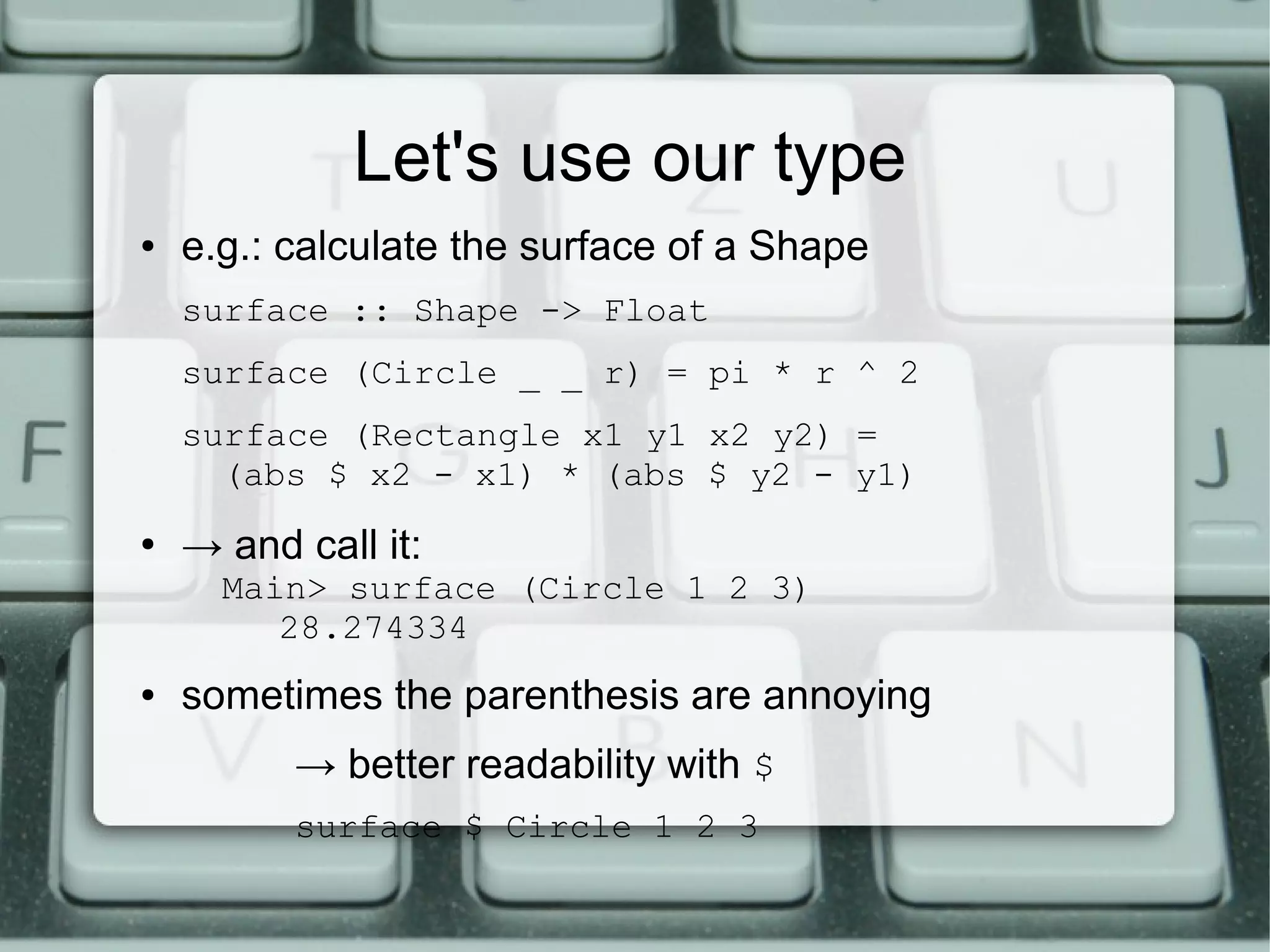
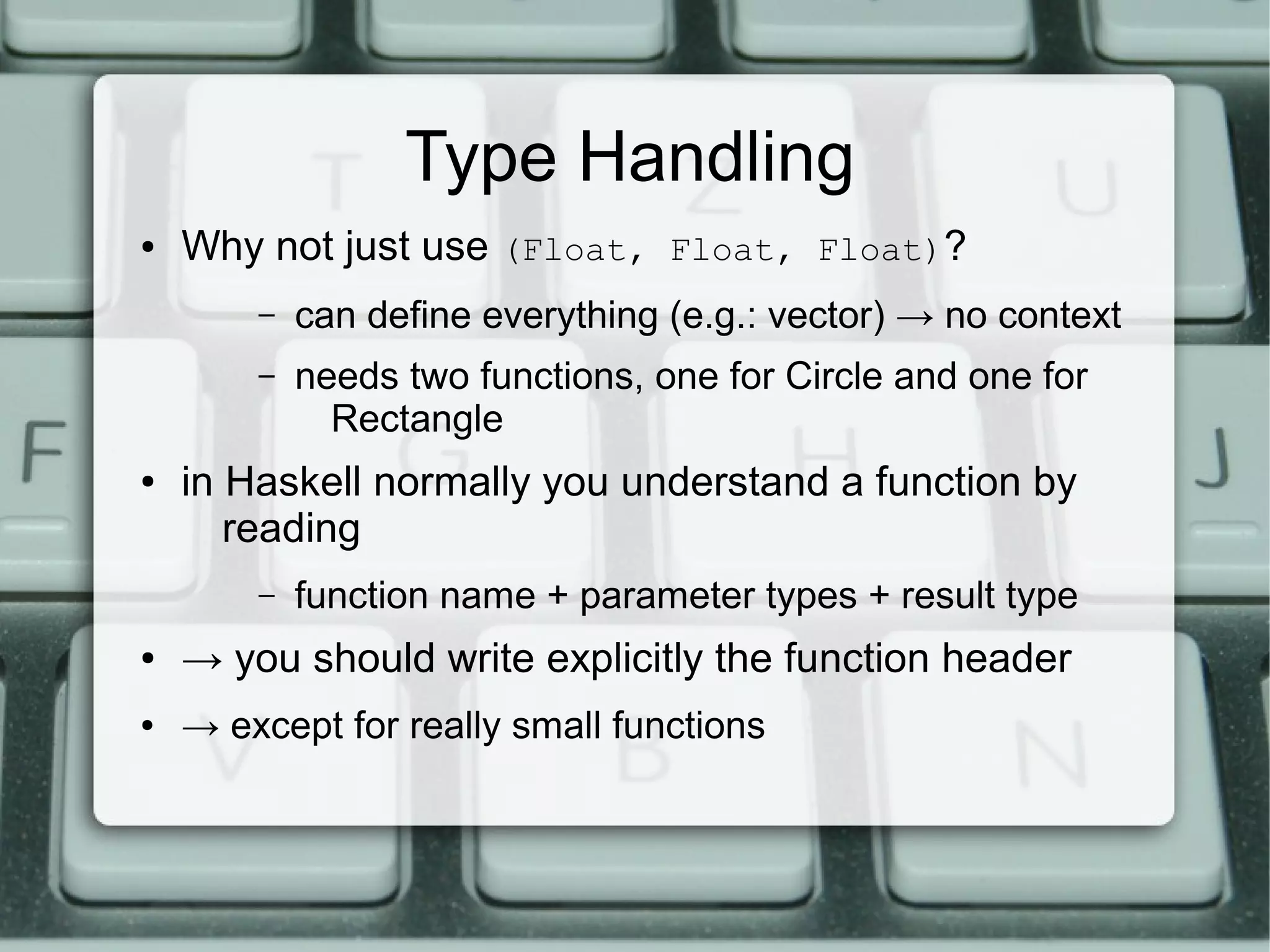
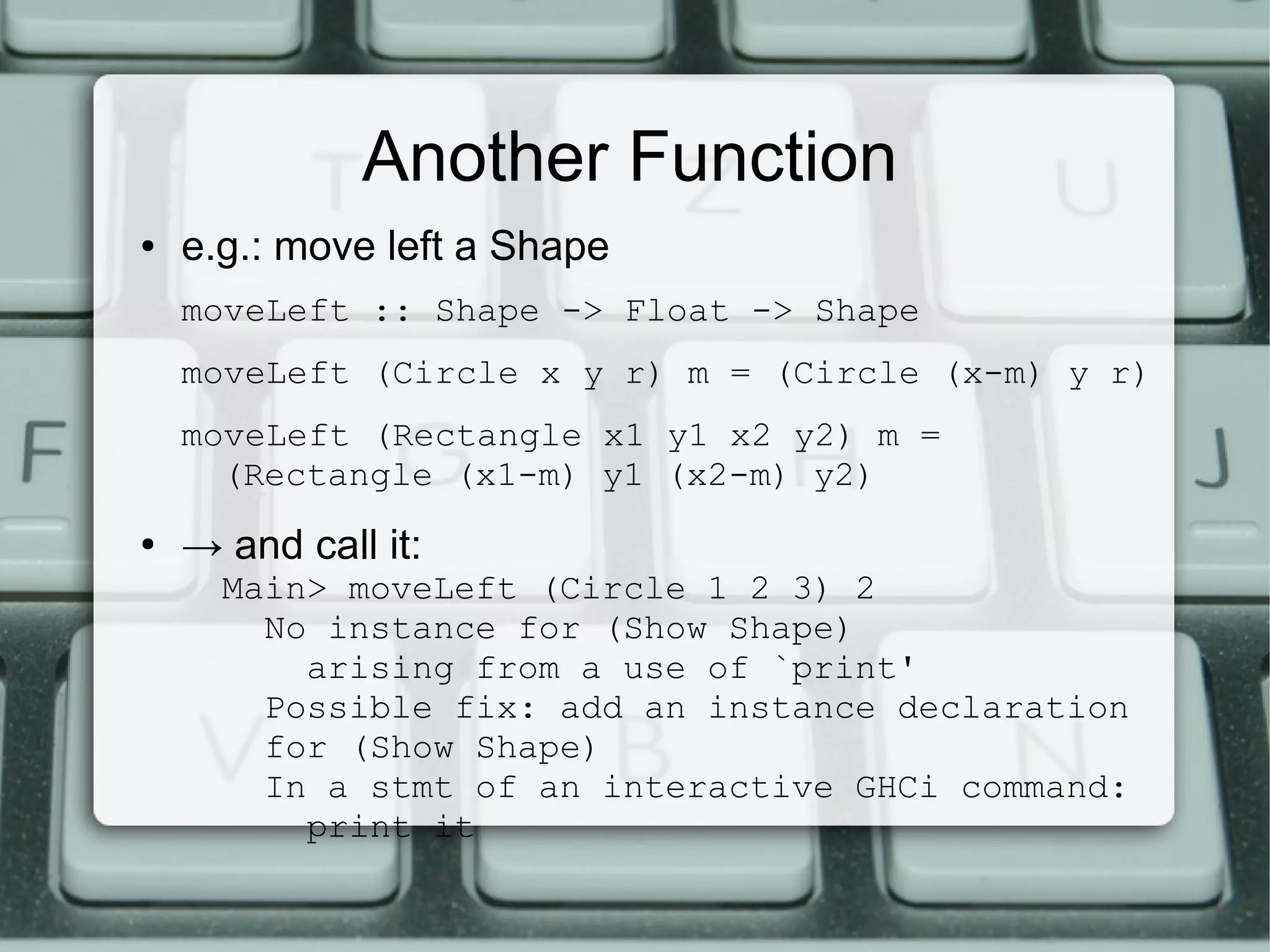
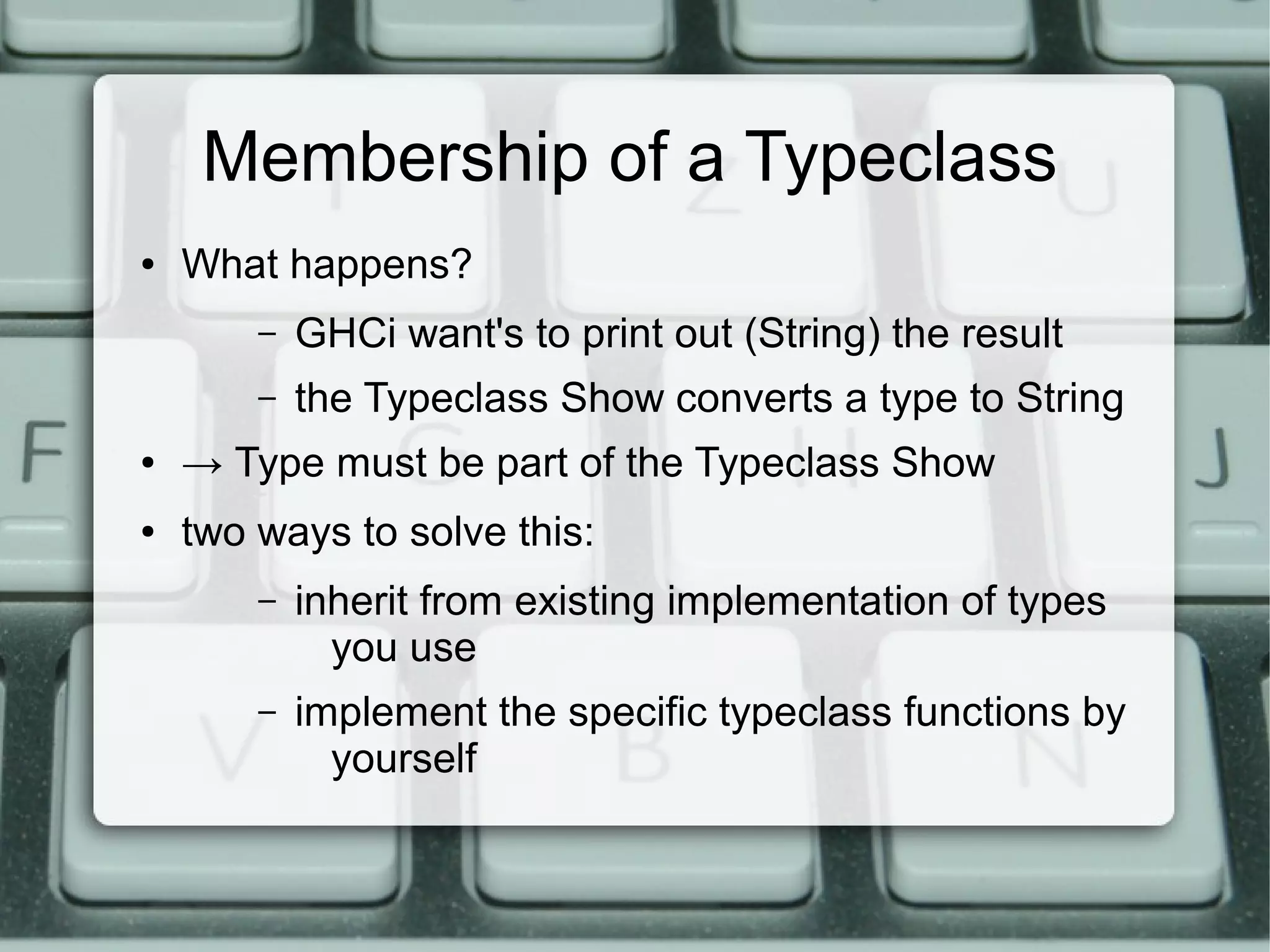
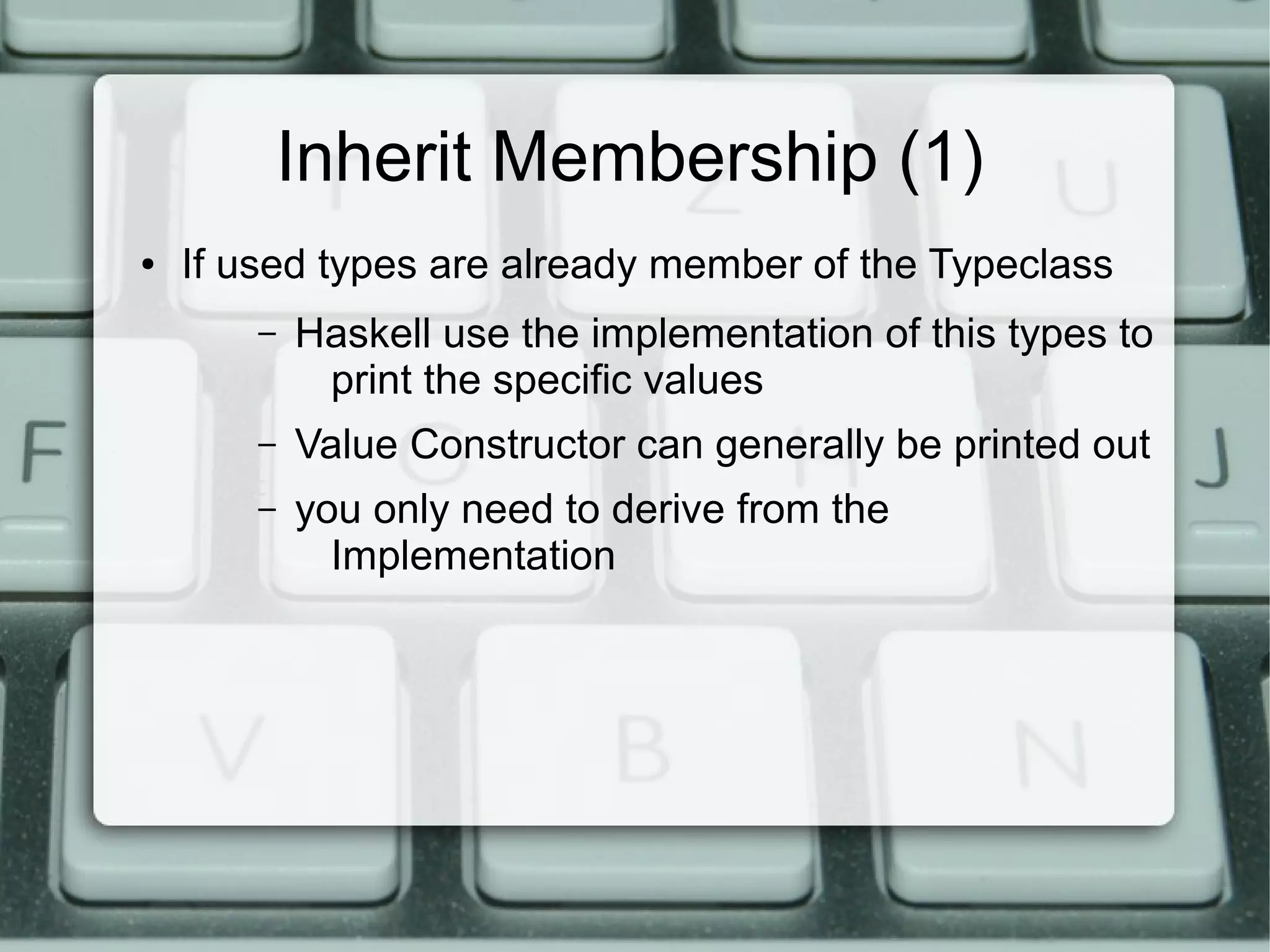
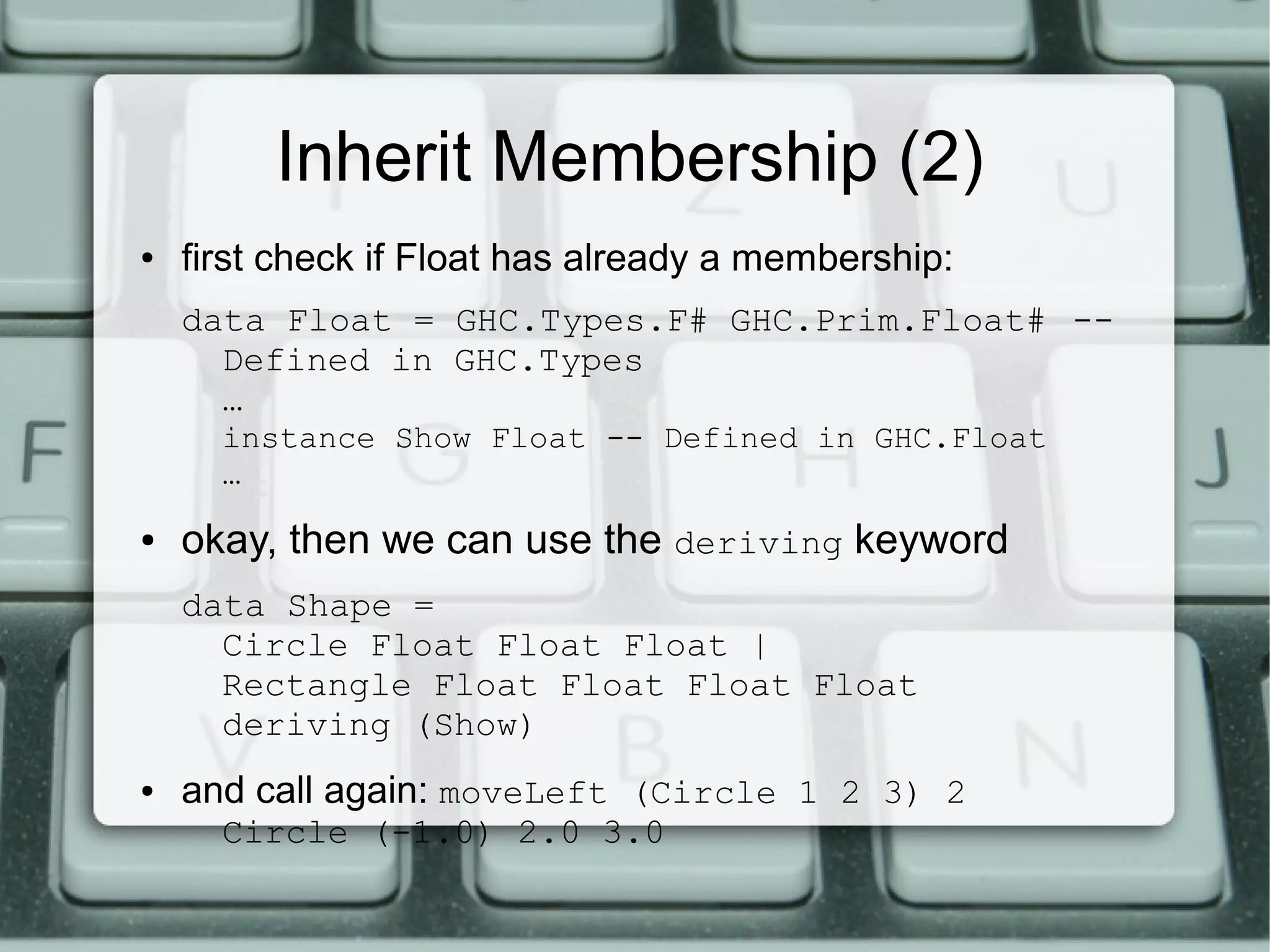
![Inherit Membership (3)
● Float has also membership of Typeclass Ord:
instance Ord Float -- Defined in GHC.Classes
instance Eq Float -- Defined in GHC.Classes
● we can also derive from Ord but also from Eq
data Shape =
Circle Float Float Float |
Rectangle Float Float Float Float
deriving (Show, Eq, Ord)
● and we can use: maxList :: (Ord a) => [a] -> a
maxList [(Circle 1 2 3), (Circle 2 3 4)]
– returns: Circle 2.0 3.0 4.0](https://image.slidesharecdn.com/06-haskelltype-builder-121213061055-phpapp01/75/06-haskell-type-builder-22-2048.jpg)
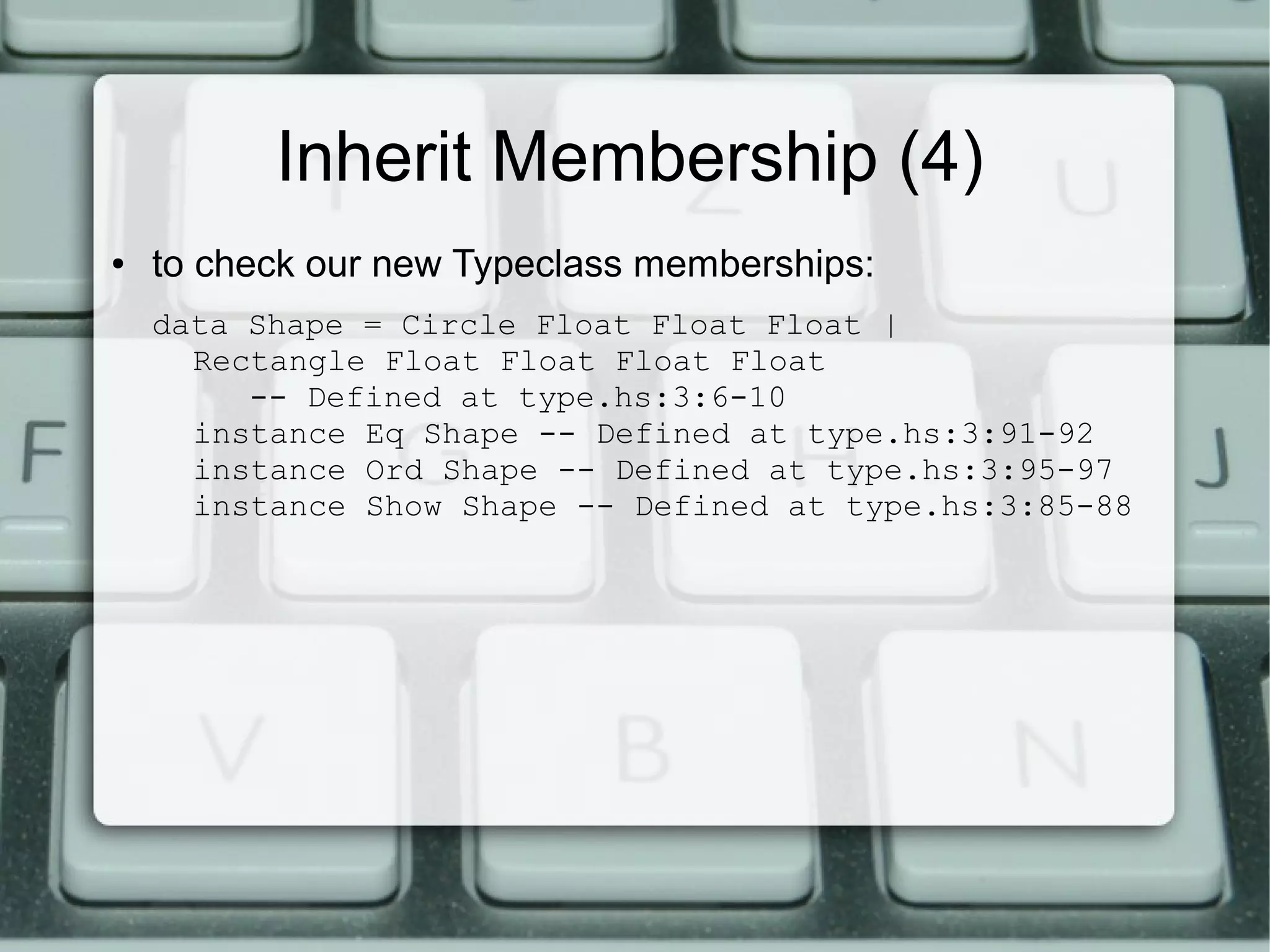

![Sources
[1] Haskell-Tutorial: Learn you a Haskell (http://learnyouahaskell.com/,
2012/03/15)
[2] The Hugs User-Manual (
http://cvs.haskell.org/Hugs/pages/hugsman/index.html, 2012/03/15)
[3] The Haskellwiki (http://www.haskell.org/haskellwiki, 2012/03/15)](https://image.slidesharecdn.com/06-haskelltype-builder-121213061055-phpapp01/75/06-haskell-type-builder-25-2048.jpg)